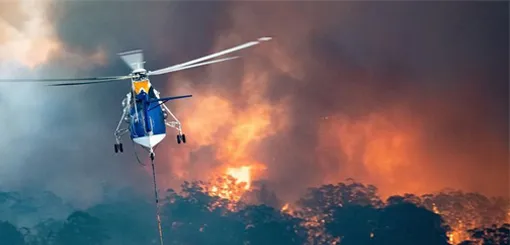The smoke caused by the fires in Australia reached Argentina, the National Weather Service reported on Monday, and assured that it does not affect "health nor flights visibility". The smoke entered Argentina from Chile, through the Andes Mountains "at some 5,000 meters or more," it said.
The fires that devastate Australia's flora and fauna are one of the greatest ecological disasters of recent decades. Prime Minister Scott Morrison admitted days ago that the link between the hundreds of fires burning in the country, in one of the worst waves of the century, and climate change, although he reaffirmed his policy of a certain neutrality in strong measures against global warming.
However, the minister stressed that climate change is "only one of the factors that have caused the fires along with drought, preemptive burning and wildfires", and rejected demands for his government to change policies.
Mr. Morrison said Australia is "shouldering its burden" in the fight against global warming and said the government will meet its commitment to reduce greenhouse gas emissions by 26 percent by 2030 compared to 2005. In addition, at least 480 million animals are falling victim to the devastating bushfires that have raged in Australia since September.
"It's an unprecedented disaster from a wildlife perspective," said Chris Dickman, an ecologist at the University of Sydney, who stressed that his calculations exclude insects, fish, frogs and some mammals like bats. The expert said that by extrapolating the results to the entire country, where 50,000 square kilometers of land or an area comparable to Costa Rica has been burned, the number of animals affected could reach one billion.

In Australia there is a great variety of animals unique to its continental territory, with some 300 native species including marsupials like kangaroos and koalas, monotremes like platypus and echidnas, and placental animals like dingoes.
Of these, some 244 species or 81 per cent are found in Australia alone.
The impact of the fires will not be known for sure until scientists are able to enter the burnt areas, but it is already estimated that the damage is immense because of the imbalance caused in the ecosystems, where many of the affected species contribute to plant pollination or seed transport, and other activities.
In this context, scientist Chris Dickman pointed out that the recovery of burnt areas "can be affected by the absence of these species which play a key role in the health of different habitats".






